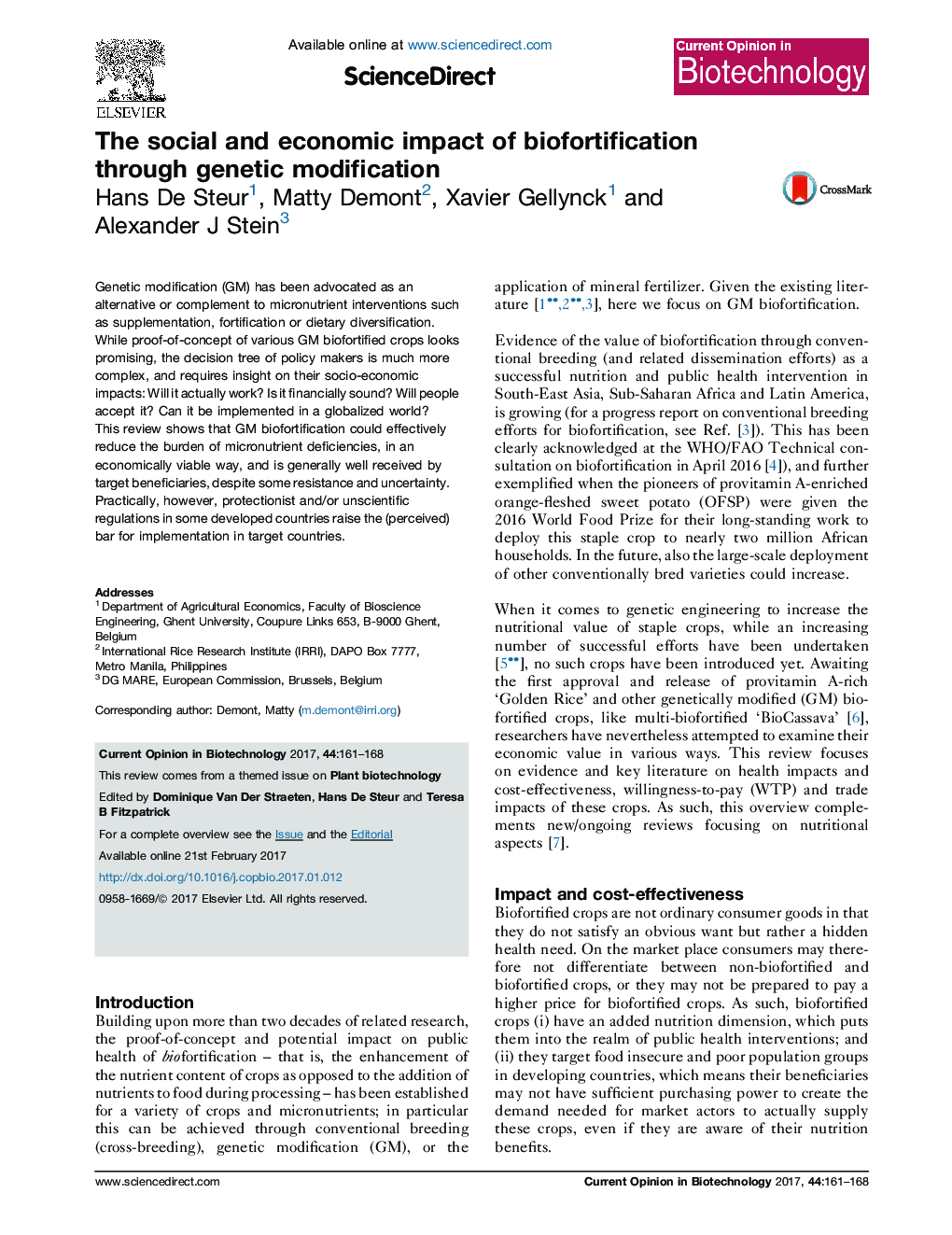| Article ID | Journal | Published Year | Pages | File Type |
|---|---|---|---|---|
| 6451586 | Current Opinion in Biotechnology | 2017 | 8 Pages |
â¢Socio-economic evidence supports the large potential of GM biofortified crops.â¢Aside from negative information effects, consumers' premium generally exceeds 20%.â¢Large potential public health benefits and overall good value for money.â¢By targeting domestic markets, trade issues are considered less relevant.â¢Upgrading local supply chains will be needed to ensure its success.
Genetic modification (GM) has been advocated as an alternative or complement to micronutrient interventions such as supplementation, fortification or dietary diversification. While proof-of-concept of various GM biofortified crops looks promising, the decision tree of policy makers is much more complex, and requires insight on their socio-economic impacts: Will it actually work? Is it financially sound? Will people accept it? Can it be implemented in a globalized world?This review shows that GM biofortification could effectively reduce the burden of micronutrient deficiencies, in an economically viable way, and is generally well received by target beneficiaries, despite some resistance and uncertainty. Practically, however, protectionist and/or unscientific regulations in some developed countries raise the (perceived) bar for implementation in target countries.
Graphical abstractDownload high-res image (262KB)Download full-size image
